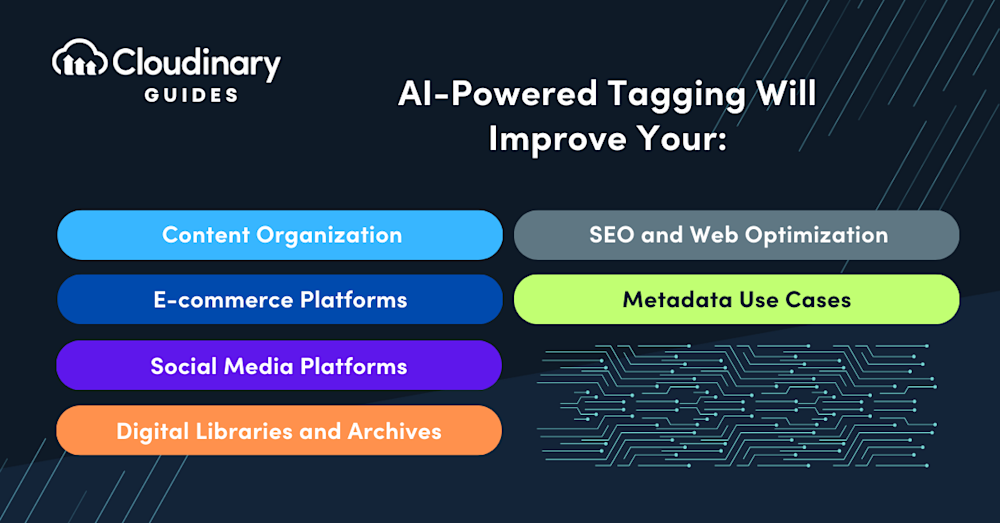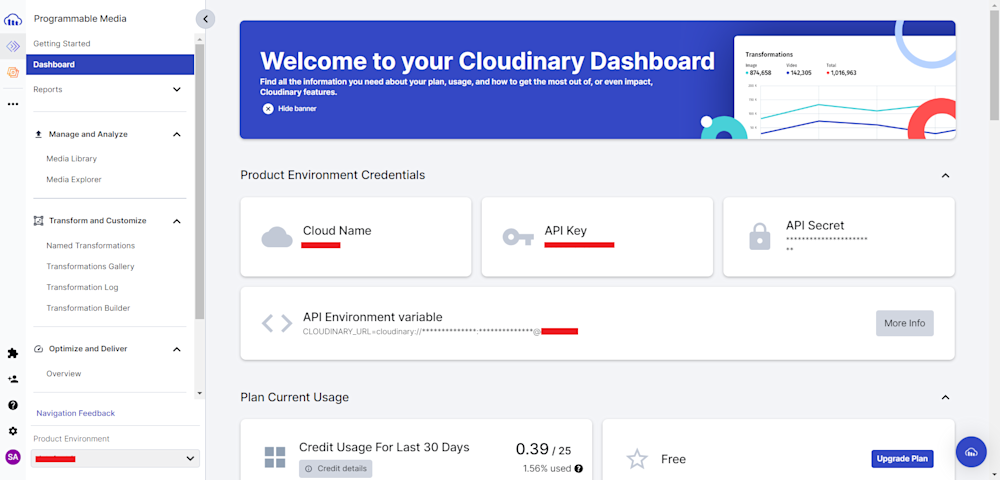Within our modern digital world, AI-generated tags play a crucial role. They simplify the management of our digital content, enhancing our ability to organize, receive personalized recommendations, and locate specific items efficiently. These tags powered by machine learning subtly shape our online interactions, whether we’re engaged in online shopping, browsing media collections, searching websites, or navigating social media platforms.
So, what’s driving this change? It’s the massive amount of digital information we encounter every day. The internet is overflowing with data, and finding what’s relevant without good tagging systems is tough. Even NASA’s data scientists built a smart tagging system using artificial intelligence (AI) and language processing to organize their data better. This shows how crucial AI-generated tags are for improving access to information and reusing data.
In this article, we’ll explore how AI-generated tags are changing digital content. We’ll look at their history, how they’re used in online shopping and social media, and how you can make the most of them.
- What Are AI-Generated Tags?
- Common Use Cases of AI-Powered Tagging
- Advantages of AI Tagging
- Challenges in AI-Generated Tagging
- Innovations and Breakthroughs in AI Tagging
- Getting Started with AI-Generated Tags and AI Tags
What Are AI-Generated Tags?
AI-generated tags, or AI auto-tagging, is a process that uses artificial intelligence to tag media files with metadata. This process creates terms that describe keywords or phrases and assigns these metadata tags to a media asset. By using complex algorithms that analyze the context of images, videos, or textual data, AI creates relevant ‘tags’ that serve as informational bookmarks for digital assets. This isn’t a simple task. It’s like the AI is solving a giant puzzle, putting together intricate pieces of data to form an understandable, easily navigable picture.
The marvel of AI-generated tags isn’t just in their accuracy but also in their efficiency. They save us from manual tagging, like a master key crafted to unlock your potential productivity. This is why various verticals, including e-commerce, digital marketing, or content management systems, find themselves drawn to the immense potential of these AI-powered digital aides.
Common Use Cases of AI-Powered Tagging
Incorporating AI-generated tags and AI tags has brought about numerous benefits across various domains, revolutionizing content management and enhancing user experiences in a wide range of applications, such as:
- Content Organization. AI-generated tags play a crucial role in content organization. They automatically categorize articles, images, and videos, making search and retrieval more efficient and user-friendly.
- E-commerce Platforms. In e-commerce, metadata tagging is utilized for product recommendations and search optimization. AI systems analyze user behavior and preferences, using tags to suggest products that match individual tastes, ultimately improving the shopping experience, increasing sales, and boosting customer satisfaction.
- Social Media Platforms. Social media platforms leverage AI-generated tags for image and video recognition, significantly improving user experiences. These tags make it easier for users to discover relevant content, enhance accessibility for individuals with disabilities, and strengthen content moderation by identifying and managing inappropriate content.
- Digital Libraries and Archives. AI-generated tags efficiently organize and retrieve vast amounts of data in libraries and archives. This application streamlines the management of extensive collections, making historical documents, photos, and multimedia content more accessible and searchable.
- SEO and Web Optimization. AI tags are critical for enhancing website visibility and user engagement in the digital world. Optimizing web content with AI-generated tags strengthens SEO efforts, improving search rankings and increasing organic traffic. This, in turn, leads to enhanced user engagement and interaction.
- Metadata Use Cases. Beyond these primary applications, AI-generated tags find utility in various metadata-related scenarios. They can be applied in healthcare for patient record classification, content recommendation systems for personalized user experiences, and document management for efficient organization and retrieval.
Advantages of AI Tagging
With the ever-increasing amount of images and videos being generated and shared online daily, manual tagging has become both impractical and excessively time-consuming. This is where the rapidity and relevance of artificial intelligence solutions become highly valuable across various fields such as the Media and Entertainment industry, Law Enforcement, Legal sectors, and more.
- Return on Investment (ROI) – Managing large volumes of media files through manual tagging is virtually impossible, even when adhering to best practices. Efficient and well-trained AI systems automate this process, enabling creators to concentrate on more strategic post-production tasks, thus saving money and creating new revenue opportunities.
- Accuracy – AI systems are designed to improve in accuracy over time. Although humans are theoretically more precise, they can be inconsistent, costly, and prone to errors. By automating the bulk of the work, AI allows humans to fine-tune the remaining fraction, ensuring perfection.
- Scalability – As content volume continues to expand, maintaining consistency and scalability becomes critical for effective content management and organization. AI-powered systems can efficiently scale to analyze and store vast amounts of media without sacrificing performance.
Challenges in AI-Generated Tagging
AI-generated tags provide significant advantages, but they also come with some important considerations that need to be taken into account for successful utilization.
One key issue is the occurrence of mislabeling and relevance concerns. Sometimes, AI systems may misinterpret content or assign tags that seem unrelated. To address this, continuous fine-tuning and careful monitoring are essential to improve the accuracy of tag assignments.
Another critical concern is the potential for biases in AI tagging algorithms. These algorithms can unintentionally inherit biases from the data they are trained on, which can lead to biased tagging decisions. Implementing strategies to detect and mitigate these biases is crucial to ensure fair and inclusive AI tagging. In addition, ensuring consistent accuracy across various content types and languages is a complex task. AI systems must be adaptable and proficient in handling different types of content effectively, including text, images, videos, and audio in multiple languages.
Pro Tip
Consider Cloudinary’s Digital Asset Management
Looking for a centralized location to manage all your media assets? Cloudinary’s Media Library makes it easy to upload, store, manage, and deliver images and videos efficiently.
Innovations and Breakthroughs in AI Tagging
AI tagging is a rapidly evolving field, and recent years have seen a series of remarkable innovations and breakthroughs that have reshaped the landscape of data management and content categorization. Let’s take a look at some of the advancements rapidly reshaping the landscape of AI tagging.
Evolution of Deep Learning Models
Deep learning models, particularly neural networks, have undergone a profound transformation. They have become more sophisticated and capable, enabling them to process and understand data with unprecedented accuracy. This evolution has played a major role in improving tagging capabilities. AI algorithms can now recognize patterns, context, and nuances in data, ensuring that tags are accurate and contextually relevant. For instance, image recognition has reached new heights, enabling AI to accurately tag objects, scenes, and even emotions depicted in images or videos.
Integration of Multi-Language and Cross-Cultural Tagging Systems
In our increasingly globalized world, it’s essential for AI to transcend language and cultural barriers. The integration of multi-language and cross-cultural tagging systems has been a game-changer. AI algorithms can now tag content in multiple languages and seamlessly adapt to different cultural contexts. This means that a piece of content can be accurately tagged and understood regardless of its language or its cultural nuances. This innovation has improved the accuracy of AI tagging and expanded its global applicability.
Real-Time Tagging for Live Content Streams and Broadcasts
The demand for real-time information and updates has never been higher, especially in the age of live streaming and constant content consumption. AI has risen to the challenge with real-time tagging capabilities. Content creators can now tag their materials on the fly, ensuring that viewers receive the most up-to-date and relevant information. Whether it’s live sports events, breaking news, or social media updates, real-time tagging has become a cornerstone of enhancing user engagement and satisfaction.
These innovations collectively show that AI tagging is in the midst of a transformative era. Improved deep learning models, cross-cultural integration, and real-time capabilities are making AI tagging more powerful and accessible than ever before. These developments are revolutionizing how we manage, analyze, and understand data in the ever-evolving digital age. As AI tagging continues to advance, it holds the promise of even more exciting possibilities, from more accurate content recommendations to enhanced data organization for businesses and individuals alike.
Getting Started with AI-Generated Tags and AI Tags
AI-generated tags have revolutionized the way we organize and manage digital content, from images and videos to documents and more. Cloudinary, a leading cloud-based media management platform, empowers developers with robust tools and APIs for AI-generated tagging, making it accessible and efficient for individuals and businesses alike. Now, let’s take a look at how you can generate AI Tags using Cloudinary’s platform and provide some example code snippets to help you kickstart your journey.
Before you can begin using Cloudinary for AI-generated tags, you’ll need an active Cloudinary account. If you don’t already have one, head to Cloudinary’s website at and sign up. Once you’ve successfully registered, log in to your account and retrieve your Product Environment Credentials.
Now that you have your Cloudinary account set up and your API credentials in hand, create a Node JS project in a directory of your choosing and install the Cloudinary Node JS using npm:
npm install cloudinary
Finally, open up a .js file and configure your Cloudinary API:
const cloudinary = require('cloudinary').v2;
cloudinary.config({
cloud_name: "your-cloud-name",
api_key: "your-api-key",
api_secret: "your-api-secret"
});
Remember to replace your-cloud-name, your-api-key, and your-api-secret with your Cloudinary credentials.
Now that you’ve set up your project, you can start exploring Cloudinary’s AI-generated tagging features.
Using Immaga AI Tagging
The Imagga Auto Tagging plugin automatically assigns relevant tags or keywords to vast collections of images and videos. A core capability of Imagga’s computer vision offering, the image tagging deep learning model analyzes the pixel content of visuals, extracts their features and detects objects of interest. Cloudinary provides an add-on for using Imagga’s image recognition capabilities, fully integrated into Cloudinary’s image management and transformation pipeline. Let’s take a look at how you can use Immage AI Tagging. For this example, we will be using guitarist available in Cloudinary’s demo cloud.
Next, use a variable to define a path to your image:
// Specify the directory of the image const id = './Assets/guitarist.jpg';
Finally, use the uploader.upload method to upload the image and specify the categorization parameter as immaga_tagging with a threshold of 70%.
// Upload the image to Cloudinary and perform automatic tagging
cloudinary.uploader.upload(id, {
type : 'upload',
categorization: 'imagga_tagging',
auto_tagging: 0.7
})
.then(result => {
// Print the automatic tags generated by Amazon Rekognition
console.log(result);
})
.catch(error => {
console.error(error);
});
The API response includes the categorizations identified by the add-on. Here are the tags generated by the API:
{
...
tags: [
'musician', 'guitar',
'singer', 'music',
'performer', 'stage',
'instrument', 'musical',
'platform'
],
...
}
Using Amazon Rekognition Auto Tagging
Amazon Rekognition offers a convenient solution for integrating image analysis into your applications. When paired as a plugin with Cloudinary, it becomes a powerful addition to your image management and transformation pipeline. Using deep neural network models, Amazon Rekognition autonomously recognizes scenes and suggests tags. It excels in efficiently processing large volumes of photos while maintaining an exceptionally high precision rate.
Let’s take a look at how you can use the addon. Here, we will use turtles.jpg from the Cloudinary demo cloud.
Cloudinary makes it very easy to use Amazon Rekognition Auto-Tagging. All we need to do is change the categorization parameter to aws_rek_tagging:
// Specify the URL of the image you want to crop
const id = './Assets/turtles.jpg';
// Upload the image to Cloudinary and perform automatic tagging using Amazon Rekognition
cloudinary.uploader.upload(id, {
type : 'upload',
categorization: 'aws_rek_tagging',
auto_tagging: 0.9
})
.then(result => {
// Print the automatic tags generated by Amazon Rekognition
console.log(result.info.categorization.aws_rek_tagging);
})
.catch(error => {
console.error(error);
});
The upload API response includes the automatic categorization identified by the Amazon Rekognition Auto Tagging add-on. Here are the various categories detected by the addon:
{
status: 'complete',
data: [
{ tag: 'Animal', confidence: 0.9992 },
{ tag: 'Reptile', confidence: 0.9992 },
{ tag: 'Sea Life', confidence: 0.9992 },
{ tag: 'Sea Turtle', confidence: 0.9992 },
{ tag: 'Turtle', confidence: 0.9992 },
{ tag: 'Tortoise', confidence: 0.9769 },
...
}
Here, the confidence score represents the confidence level of the detected category, where 1.0 means 100% confidence.
Final Thoughts
AI-generated tags represent a significant advancement in the field of information organization and retrieval. AI-generated tags have brought about transformative changes in the landscape of data management and content categorization. It allows you to create personalized user experiences, simplify complex processes, and explore new creative and problem-solving avenues. As AI continues to evolve, its role in content organization will only become more integral.
Right now is a good time for those looking to embrace AI tagging, whether you’re a content manager, data analyst, or just someone interested in the field. With Cloudinary, AI tagging has never been easier. It lets you do more with data, ensuring that your content is easily accessible and helping you navigate the digital world more effectively.
So, get started with Cloudinary today and take your content management to the next level.
Learn more:
Setting up Automatic AI Content-Recognition Tagging in the Cloudinary DAM
How to leverage multiple categorization engines for improved automatic image tagging
Video tagging made easy: Google-powered add-on for automatic video tagging





